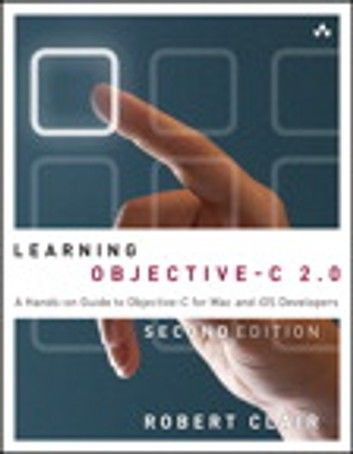| FindBook |
有 1 項符合
Learning Objective-C 2.0的圖書 |
 |
Learning Objective-C 2.0 作者:Robert Clair 出版社:Pearson Education 出版日期:2012-11-14 語言:英文 |
| 圖書館借閱 |
| 國家圖書館 | 全國圖書書目資訊網 | 國立公共資訊圖書館 | 電子書服務平台 | MetaCat 跨館整合查詢 |
| 臺北市立圖書館 | 新北市立圖書館 | 基隆市公共圖書館 | 桃園市立圖書館 | 新竹縣公共圖書館 |
| 苗栗縣立圖書館 | 臺中市立圖書館 | 彰化縣公共圖書館 | 南投縣文化局 | 雲林縣公共圖書館 |
| 嘉義縣圖書館 | 臺南市立圖書館 | 高雄市立圖書館 | 屏東縣公共圖書館 | 宜蘭縣公共圖書館 |
| 花蓮縣文化局 | 臺東縣文化處 |
|
|
Get Started Fast with Objective-C 2.0 Programming for OS X Mountain Lion, iOS 5.1, and Beyond
Fully updated for Xcode 4.4, Learning Objective-C 2.0, Second Edition, is today’s most useful beginner’s guide to Objective-C 2.0. One step at a time, it will help you master the newest version of Objective-C 2.0 and start writing high-quality programs for OS X 10.8 Mountain Lion, iOS 5.1, and all of Apple’s newest computers and devices.
Top OS X and iOS developer Robert Clair first reviews the essential object and C concepts that every Objective-C 2.0 developer needs to know. Next, he introduces the basics of the Objective-C 2.0 language itself, walking through code examples one line at a time and explaining what’s happening behind the scenes.
This revised edition thoroughly introduces Apple’s new Automated Reference Counting (ARC), while also teaching conventional memory-management techniques that remain indispensable. Carefully building on what you’ve already learned, Clair progresses to increasingly sophisticated techniques in areas ranging from frameworks to security. Every topic has been carefully chosen for its value in real-world, day-to-day programming, and many topics are supported by hands-on practice exercises.
Coverage includes
· Reviewing key C techniques and concepts, from program structure and formats to variables and scope
· Understanding how objects and classes are applied in Objective-C 2.0
· Writing your first Objective-C program with Xcode 4.4
· Using messaging to efficiently perform tasks with objects
· Getting started with Apple’s powerful frameworks and foundation classes
· Using Objective-C control structures, including Fast Enumeration and exception handling
· Adding methods to classes without subclassing
· Using declared properties to save time and simplify your code
· Mastering ARC and conventional memory management, and knowing when to use each
· Using Blocks to prepare for concurrency with Apple’s Grand Central Dispatch
· Leveraging Xcode 4.4 improvements to enums and @implementation
|











